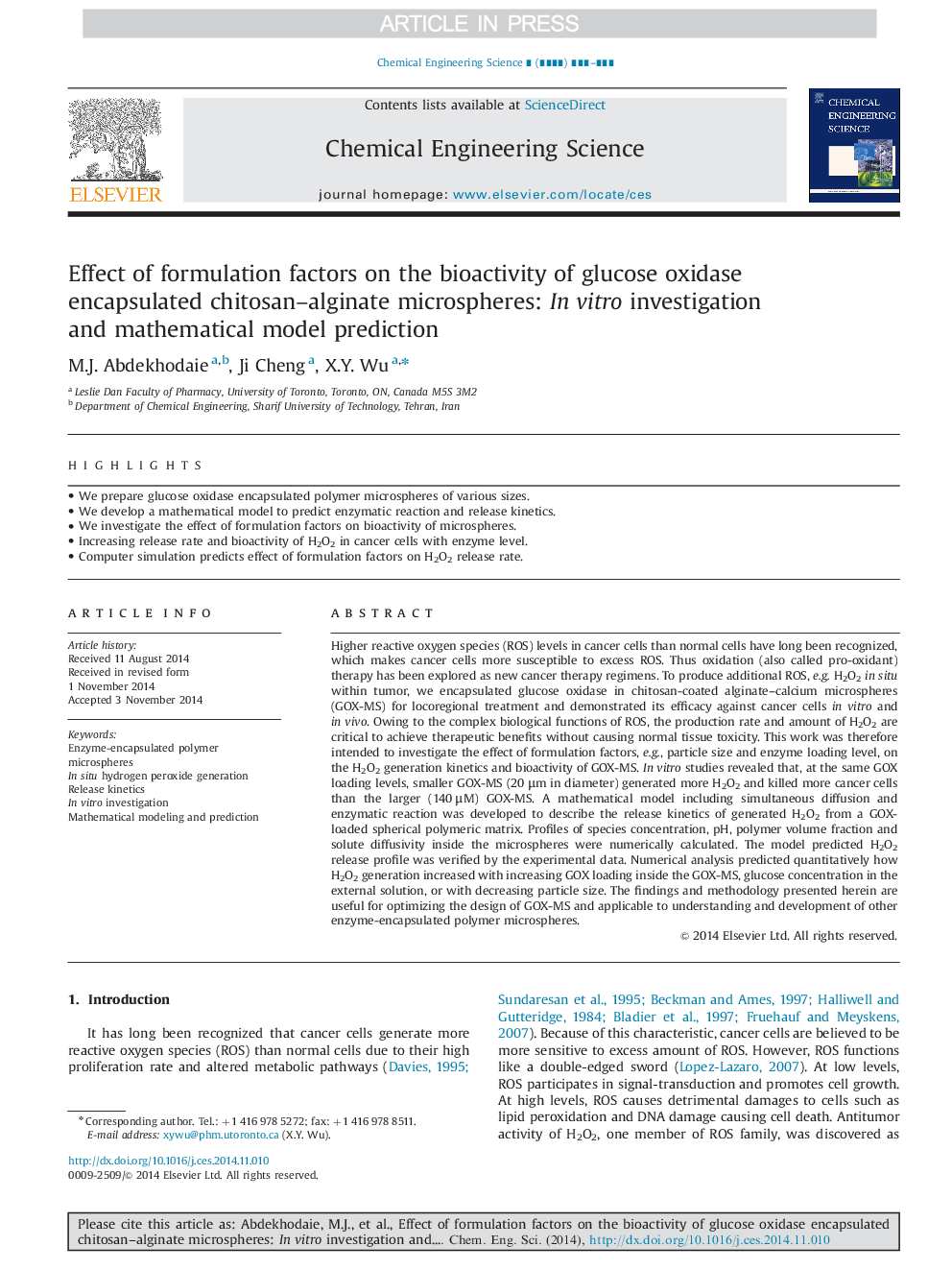| Article ID | Journal | Published Year | Pages | File Type |
|---|---|---|---|---|
| 6590400 | Chemical Engineering Science | 2015 | 9 Pages |
Abstract
Higher reactive oxygen species (ROS) levels in cancer cells than normal cells have long been recognized, which makes cancer cells more susceptible to excess ROS. Thus oxidation (also called pro-oxidant) therapy has been explored as new cancer therapy regimens. To produce additional ROS, e.g. H2O2in situ within tumor, we encapsulated glucose oxidase in chitosan-coated alginate-calcium microspheres (GOX-MS) for locoregional treatment and demonstrated its efficacy against cancer cells in vitro and in vivo. Owing to the complex biological functions of ROS, the production rate and amount of H2O2 are critical to achieve therapeutic benefits without causing normal tissue toxicity. This work was therefore intended to investigate the effect of formulation factors, e.g., particle size and enzyme loading level, on the H2O2 generation kinetics and bioactivity of GOX-MS. In vitro studies revealed that, at the same GOX loading levels, smaller GOX-MS (20 μm in diameter) generated more H2O2 and killed more cancer cells than the larger (140 μM) GOX-MS. A mathematical model including simultaneous diffusion and enzymatic reaction was developed to describe the release kinetics of generated H2O2 from a GOX-loaded spherical polymeric matrix. Profiles of species concentration, pH, polymer volume fraction and solute diffusivity inside the microspheres were numerically calculated. The model predicted H2O2 release profile was verified by the experimental data. Numerical analysis predicted quantitatively how H2O2 generation increased with increasing GOX loading inside the GOX-MS, glucose concentration in the external solution, or with decreasing particle size. The findings and methodology presented herein are useful for optimizing the design of GOX-MS and applicable to understanding and development of other enzyme-encapsulated polymer microspheres.
Keywords
Related Topics
Physical Sciences and Engineering
Chemical Engineering
Chemical Engineering (General)
Authors
M.J. Abdekhodaie, Ji Cheng, X.Y. Wu,
